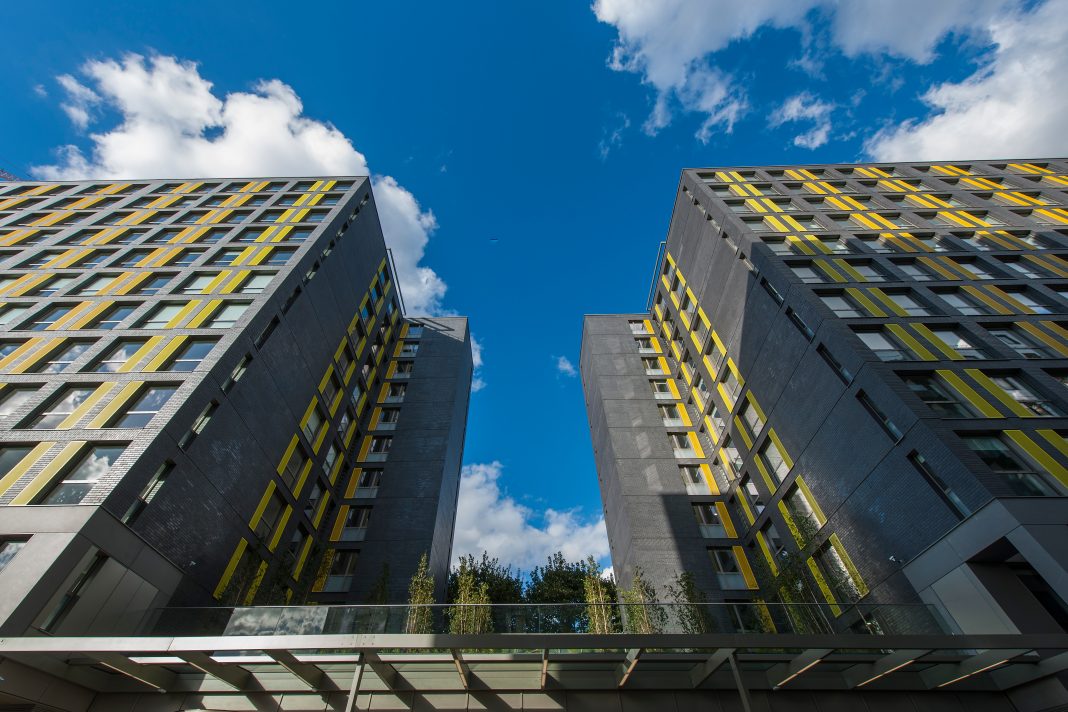The UK’s housing market and the wider construction sector face multiple challenges. Kim Vernau, CEO of BLP Insurance, discusses what needs to happen to effect meaningful change
Collaboration is defined as “the action of working with someone to produce something” or, alternatively, “traitorous cooperation with an enemy”. Too often within the construction industry, the latter meaning is borne out. Combined with other issues, such as an image problem, ageing workforce and the uncertainty of Brexit, it is clear that the industry is in need of galvanisation.
The government has targeted the construction of 300,000 new homes by 2022. To deliver on housing supply, through a more efficient, productive and aspirational construction sector, the industry requires wholesale innovation and collaboration.
Private and public sector synergy
If there is a perception that the public sector is slow, bureaucratic and doesn’t understand commercial realities then equally, the private sector is seen by many as rapacious, profit-focused and having no regard for the needs of communities.
While flaws exist on both sides, ultimately a dynamic shift is needed in the way public and private sectors cooperate. Local authorities have seen their budgets decimated in recent times. This has led to the migration of skills and knowledge to the private sector and a greater need for public sector bodies, such as housing associations, to partner with private sector providers. This should act as positive encouragement for local authorities to form lasting, genuine partnerships that can benefit both parties.
In most European countries, around one-third of housing output is through SMEs, whereas in the UK 98% of housing output is from the top 10 volume housebuilders. SME developers have the capacity to build with quality, to cost and in a timely manner. By enabling this through the local authority planning process, together with access to finance, a tangible boost could be provided to hitting housing targets.
Capacity conundrum
Presently, only 15% of UK construction capacity is committed to UK housing and a shift in focus from other areas of the industry is needed. The industry is simply not exploiting its potential to deliver housing. There has been a noticeable influx of global investment into the sector through modular technology, which brings with it a real opportunity to build smart, efficient and cost-effective homes en masse.
Build to Rent (BTR) provides one example of the potential to deliver homes on a mass scale, enabling communities to be planned and run effectively. The financial reality is that many people who want to buy simply can’t. They should not be condemned to the lottery of the lowly regulated private rented sector when it is possible for them to reside in well-constructed communities. BTR housing, constructed on a mass scale using offsite and modular construction, could help alleviate a significant proportion of the burden of the current housing shortage.
Behavioural change
The ongoing internationalisation of the industry, as a result of foreign investment, could also lead to a positive change in behaviour in other areas, such as data sharing. In the UK, data around occupancy rates in the BTR space is opaque, whereas this data is freely available and shared in the US market. US companies still compete, but they are confident in their product and offering, often providing competitors with access to their latest construction projects.
The collective sharing of ideas and data across the industry as a whole should be viewed as a necessary evolution that can revolutionise the way we deliver homes.
Supply-side solutions over demand-side interventions
The government needs to overcome its obsession with small and isolated demand-side interventions, including populist housing policies such as the Help to Buy scheme. Instead, focusing more on bigger picture supply-side issues can generate more housing stock of different tenure types in multiple areas. The so-called “active adult”, between the ages of 55 and 85, who want to downsize but who don’t want to live in a traditional retirement community, is a group that didn’t exist 20 years ago. Currently, there is no appropriate housing stock to suit their needs.
Some developers in the market have been very bold in re-evaluating their delivery model, understanding that the type of stock built 10 years ago isn’t sufficient today. More creative problem-solving is needed to provide workable supply-side solutions necessary to alleviate the housing shortage.
Onside with offsite
In order to achieve its target of building an extra 150,000 homes a year, the government must embrace and promote offsite or modular construction. Offsite builds continue to conjure up images of crude 1970s “prefabs”. The industry needs to be better at communicating what offsite actually means (both within and outside the construction sector), emphasising the precision of the engineered manufacturing process, innovative technology, practicality and tangible savings in waste, cost and time. The initial apprehension of offsite construction has to be counteracted to the point where people are comfortable living in a 15-storey apartment that was built digitally or constructed offsite.
For offsite construction to truly revolutionise how we deliver homes may require a trailblazing innovator to disrupt the sector. The residential property market tends to lag behind the wider real estate industry.
For example, WeWork has already transformed the commercial office market and Airbnb has irrevocably changed the way people book short-term accommodation. There is room for disruptors within the residential space to dictate the pace of change for offsite construction.
Conclusion
There is no quick-fix solution to the multiple issues facing the housing industry and wider construction sector, and initiatives around SME builders, local authority planning, providing suitable housing for the elderly and the implementation of offsite technology will all take time.
To exact meaningful change requires not only long-term commitment and investment from major industry stakeholders, such as the government and large developers, but also a collective will to shift the industry’s cultural mindset. By instilling a greater appetite and aptitude to collaborate across the sector, all participants can benefit from a more progressive, efficient, cost-effective and innovative construction industry.
Kim Vernau
CEO
BLP Insurance
Tel: +44 (0)20 3411 4136
Twitter: @ChooseBLP














